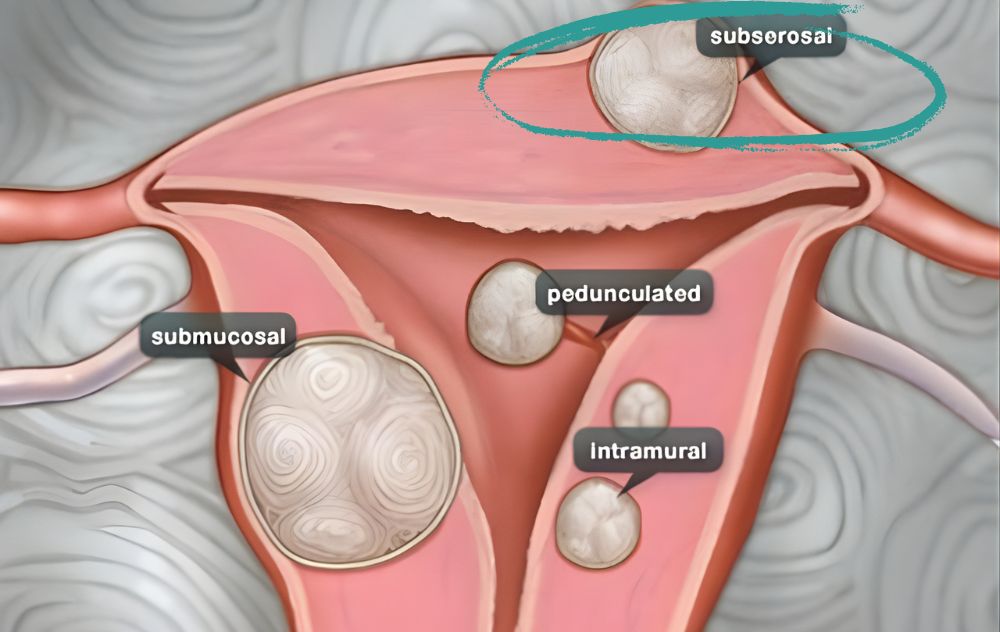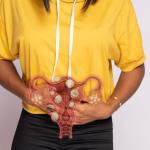
Subserosal fibroids are one of the most common types of uterine fibroids — noncancerous growths that form on the uterus. These fibroids develop on the outer surface of the uterus (the serosa) and can grow outward into the pelvic cavity.
While some women may not experience noticeable symptoms, others may suffer from chronic discomfort, pressure, or visible abdominal bulging. Because of this range, many wonder: Do subserosal fibroids need to be removed? The short answer is that it depends. Whether or not removal is necessary depends on the size, location, and impact of the fibroid on your daily life.
Let’s explore what subserosal fibroids are, what symptoms they cause, and when treatment is recommended.
Understanding Subserosal Fibroids
Fibroids, also known as leiomyomas or myomas, are made up of muscle and fibrous tissue. They can vary greatly in size — from as small as a pea to as large as a grapefruit or even larger.
Subserosal fibroids grow on the outer uterine wall and project outward. Because of their position, they generally don’t affect menstrual bleeding as much as other types, like intramural or submucosal fibroids. However, they can still cause pressure-related symptoms as they push against nearby organs.
Common Symptoms of Subserosal Fibroids
While some women remain symptom-free, larger fibroids can cause:
-
Pelvic pressure or fullness that worsens when sitting or bending
-
Abdominal bloating or the appearance of a swollen belly
-
Lower back pain or leg discomfort due to nerve pressure
-
Frequent urination or urgency from pressure on the bladder
-
Constipation or bowel difficulties caused by rectal compression
-
Pain during intercourse (dyspareunia) if the fibroid presses on sensitive areas
In rare cases, very large subserosal fibroids can grow on a stalk (called pedunculated fibroids), which can twist and cause sudden, severe pain.
Do Subserosal Fibroids Need to Be Removed?
Not always. Many women with small, asymptomatic subserosal fibroids do not need immediate treatment. However, if fibroids continue to grow or start to affect your daily comfort, you should discuss treatment options with a fibroid specialist.
When You May Not Need Removal
If your fibroids are:
-
Small and stable in size
-
Not causing pain or pressure
-
Not affecting nearby organs or fertility
… then your doctor may recommend monitoring them with regular ultrasounds to track any changes in size or symptoms.
When Treatment Becomes Necessary
Fibroid removal or treatment is typically recommended when:
-
The fibroid causes significant pelvic or back pain
-
You experience frequent urination or difficulty emptying your bladder
-
You have constipation or digestive issues due to pelvic pressure
-
There’s visible abdominal distension or bloating
-
The fibroid is growing quickly or pressing on surrounding nerves or tissues
Even though subserosal fibroids are benign, untreated large fibroids can lead to complications such as hydronephrosis (swelling of the kidneys due to blocked urine flow) or nerve compression, which can cause chronic pain and discomfort.
Diagnosing Subserosal Fibroids
To determine whether your subserosal fibroids need treatment, your doctor may recommend imaging tests such as:
-
Ultrasound: The most common and non-invasive way to visualize fibroids.
-
MRI: Helps determine the exact size, number, and location of fibroids in relation to nearby organs.
-
CT Scan or Sonohysterography: In some cases, these may be used to rule out other pelvic conditions.
These diagnostic tools help physicians decide whether symptoms are indeed fibroid-related and what treatment options are best suited to your case.
Treatment Options for Subserosal Fibroids
If your fibroids are causing symptoms, there are several treatment options, both surgical and non-surgical. Understanding your choices can help you make an informed decision about whether fibroid removal is necessary.
1. Uterine Fibroid Embolization (UFE)
At USA Fibroid Centers, we specialize in Uterine Fibroid Embolization (UFE) — a non-surgical, outpatient procedure that targets fibroids directly by blocking their blood supply.
Once deprived of blood flow, fibroids shrink naturally over time, and symptoms gradually improve.
Benefits of UFE include:
-
No surgery or general anesthesia
-
Uterus is preserved
-
Short recovery (typically 5–7 days)
-
Effective for multiple or large fibroids
-
Covered by most insurance plans
2. Myomectomy
A myomectomy is a surgical procedure that removes fibroids while keeping the uterus intact. It can be performed through traditional open surgery, laparoscopy, or hysteroscopy depending on fibroid size and location.
However, this option requires anesthesia, longer recovery time, and carries a risk of fibroid recurrence.
3. Hysterectomy
A hysterectomy — the complete removal of the uterus — is a permanent solution that eliminates fibroids and prevents regrowth. However, it is major surgery and not suitable for women who wish to have children in the future. It also carries longer recovery and potential hormonal side effects if the ovaries are removed.
Why Many Women Choose UFE for Subserosal Fibroid Removal
For many women, the thought of undergoing surgery is intimidating — especially when there’s a less invasive option available.
Uterine Fibroid Embolization has become a preferred treatment for subserosal fibroids because it:
-
Preserves the uterus
-
Minimizes downtime
-
Avoids hospital stays
-
Addresses multiple fibroids at once
Clinical studies show that most women experience significant relief from pressure, bloating, and pelvic pain after UFE. Within months, the fibroid shrinks, and symptoms fade — without stitches or surgical scars.
Living with Subserosal Fibroids
Even though subserosal fibroids are benign, they can still take a toll on your physical comfort and emotional well-being. Living with chronic pressure, pain, or bloating can affect sleep, productivity, and self-confidence.
If you’ve been told to “wait and see,” but your symptoms continue to worsen, it may be time to explore your treatment options. You don’t have to live with discomfort or uncertainty — effective, non-surgical relief is possible.
Consider USA Fibroid Centers for a Subserosal Fibroid Removal Consultation
Subserosal fibroids don’t always need to be removed — but they shouldn’t be ignored, especially if they cause pressure, pain, or visible swelling. The best approach depends on your symptoms, goals, and overall health.
At USA Fibroid Centers, our specialists offer personalized, non-surgical treatment options like Uterine Fibroid Embolization (UFE) to help you find relief without major surgery.


